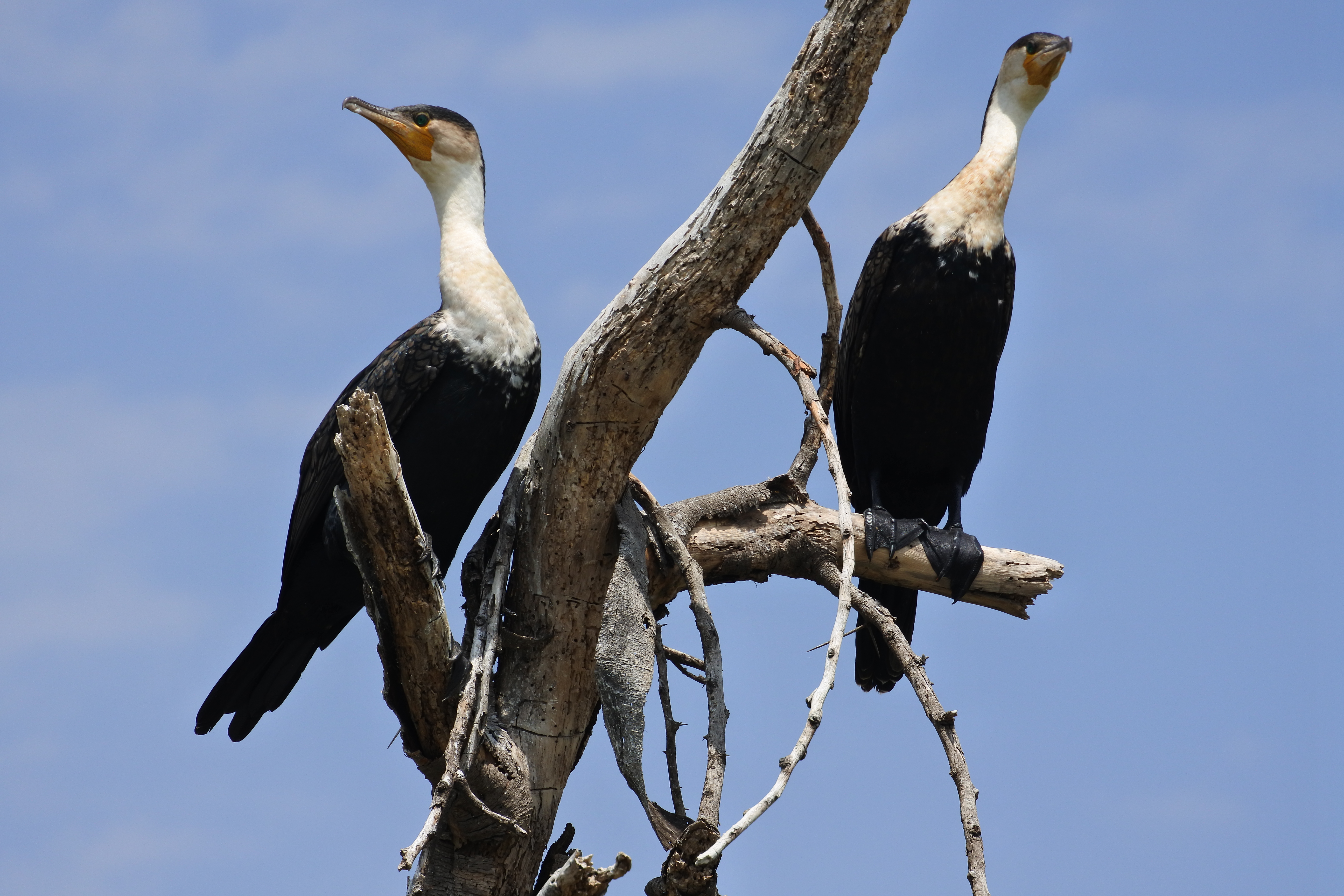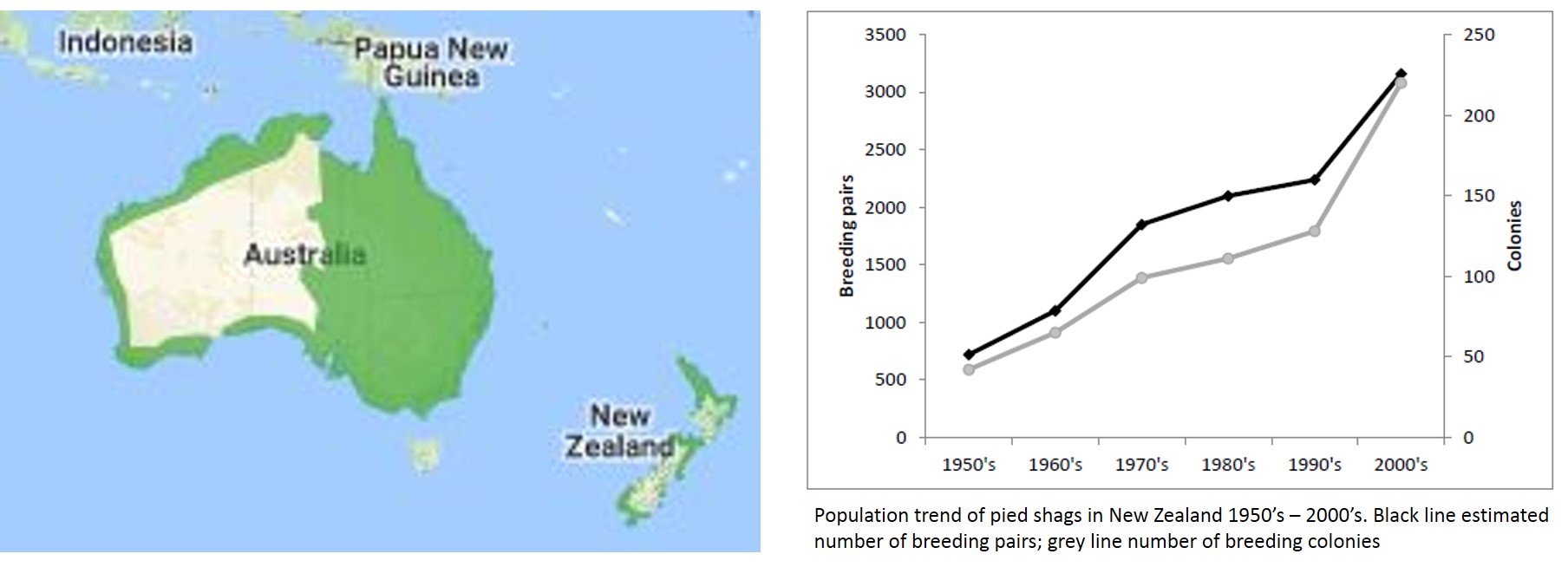|
Phalacrocorax
''Phalacrocorax'' is a genus of fish-eating birds in the cormorant family Phalacrocoracidae. Members of this genus are also known as the Old World cormorants. Taxonomy The genus ''Phalacrocorax'' was introduced by the French zoologist Mathurin Jacques Brisson in 1760 with the great cormorant (''Phalacrocorax carbo'') as the type species. ''Phalacrocorax'' is the Latin word for a cormorant. Formerly, many other species of cormorant were classified in ''Phalacrocorax'', but most of these have been split out into different genera. A 2014 study found ''Phalacrocrax'' to be the sister genus to '' Urile'', which are thought to have split from each other between 8.9–10.3 million years ago. Current taxonomy A molecular phylogenetic study published in 2014 found that the genus ''Phalacrocorax'' contains 12 species. This taxonomy was adopted by the IUCN Red List and BirdLife International, and later by the IOC. Alternative taxonomies Formerly, the gen ... [...More Info...] [...Related Items...] OR: [Wikipedia] [Google] [Baidu] |
Phalacrocoracidae
Phalacrocoracidae is a family of approximately 40 species of aquatic birds commonly known as cormorants and shags. Several different classifications of the family have been proposed, but in 2021 the International Ornithologists' Union (IOU) adopted a consensus taxonomy of seven genera. The great cormorant (''Phalacrocorax carbo'') and the common shag (''Gulosus aristotelis'') are the only two species of the family commonly encountered in Britain and Ireland, and the names "cormorant" and "shag" have been later assigned to different species in the family somewhat haphazardly. Cormorants and shags are medium-to-large birds, with body weight in the range of and wing span of . The majority of species have dark feathers. The bill is long, thin and hooked. Their feet have webbing between all four toes. All species are fish-eaters, catching the prey by diving from the surface. They are excellent divers, and under water they propel themselves with their feet with help from their wing ... [...More Info...] [...Related Items...] OR: [Wikipedia] [Google] [Baidu] |
Great Cormorant
The great cormorant (''Phalacrocorax carbo''), also known as just cormorant in Britain, as black shag or kawau in New Zealand, formerly also known as the great black cormorant across the Northern Hemisphere, the black cormorant in Australia, and the large cormorant in India, is a widespread member of the cormorant family of seabirds. It breeds in much of the Old World, Australasia, and the Atlantic coast of North America. Taxonomy The great cormorant was formally described in 1758 by the Swedish naturalist Carl Linnaeus in the tenth edition of his ''Systema Naturae'' under the binomial name ''Pelecanus carbo''. Linnaeus specified the type location as "Europe", but this was restricted to the "rock-nesting form of the north Atlantic Ocean" by the German ornithologist Ernst Hartert in 1920. The great cormorant is now one of 12 species placed in the genus '' Phalacrocorax'' that was introduced in 1760 by the French zoologist Mathurin Jacques Brisson. The genus name is Latinised Anc ... [...More Info...] [...Related Items...] OR: [Wikipedia] [Google] [Baidu] |
Phalacrocorax Varius
The Australian pied cormorant (''Phalacrocorax varius''), also known as the pied cormorant, pied shag, or great pied cormorant, is a medium-sized member of the cormorant family. It is found around the coasts of Australasia. In New Zealand, it is usually known either as the pied shag or by its Māori name of . Older sources may refer to it as the "yellow-faced cormorant". Taxonomy The Australian pied cormorant was formally described in 1789 by the German naturalist Johann Friedrich Gmelin in his revised and expanded edition of Carl Linnaeus's ''Systema Naturae''. He placed it in the genus '' Pelecanus'' and coined the binomial name ''Pelecanus varius''. Gmelin based his description on the "pied shag" from Queen Charlotte Sound, New Zealand, that had been described in 1785 by English ornithologist John Latham in his book ''A General Synopsis of Birds''. Latham had based his own description on a specimen in the Leverian Museum and on a watercolour by Georg Forster that belonge ... [...More Info...] [...Related Items...] OR: [Wikipedia] [Google] [Baidu] |
Australian Pied Cormorant
The Australian pied cormorant (''Phalacrocorax varius''), also known as the pied cormorant, pied shag, or great pied cormorant, is a medium-sized member of the cormorant family. It is found around the coasts of Australasia. In New Zealand, it is usually known either as the pied shag or by its Māori name of . Older sources may refer to it as the "yellow-faced cormorant". Taxonomy The Australian pied cormorant was formally described in 1789 by the German naturalist Johann Friedrich Gmelin in his revised and expanded edition of Carl Linnaeus's ''Systema Naturae''. He placed it in the genus '' Pelecanus'' and coined the binomial name ''Pelecanus varius''. Gmelin based his description on the "pied shag" from Queen Charlotte Sound, New Zealand, that had been described in 1785 by English ornithologist John Latham in his book ''A General Synopsis of Birds''. Latham had based his own description on a specimen in the Leverian Museum and on a watercolour by Georg Forster that belo ... [...More Info...] [...Related Items...] OR: [Wikipedia] [Google] [Baidu] |
Phalacrocorax Fuscescens
The black-faced cormorant (''Phalacrocorax fuscescens''), also known as the black-faced shag, is a medium-sized member of the cormorant family. Upperparts, including facial skin and bill, are black, with white underparts. It is endemic to coastal regions of southern Australia. Description Like other cormorant species, the black-faced cormorant is a large aquatic bird, with a long hooked bill, webbed feet, and monochromatic plumage. This is one of the largest cormorants found in south-western Australia and has pied plumage with the upper half of its body black and the undersides white. Its face is naked and black, hence the "black-faced" name, and the tail, feet, and thighs are also black. The back feathers are glossy, and its bill is dark grey with a prominent hook at the tip. It has blue-green eyes. When flying, it holds its head level or lower than its body and holds its wings in a cross-shape like most cormorants. Species that are similar in appearance include the pied ... [...More Info...] [...Related Items...] OR: [Wikipedia] [Google] [Baidu] |
Pitt Shag
The Pitt shag (''Phalacrocorax featherstoni''), also known as the Pitt Island shag or Featherstone's shag, is a species of bird in the family Phalacrocoracidae. It is endemic to Pitt Island where its natural habitats are open seas and rocky shores. The bird with the color of a dark body, gray chest, yellow eyes and feet can be found in small groups in their breeding habitat or alone within 18 km from their territory searching for food. The species was close to extinction in 1905 but actions of conservation have been done ever since. The Pitt shag is threatened by habitat loss due to predation and climate change causing a decline from 1997 to 2012, but there is a recovery plan by the Department of Conservation. Description Members of the shag family belong to three groups, based on the color of their feet: black, yellow or pink. Outside New Zealand, the black-footed shags are better known as cormorants. The Pitt shag belongs to the yellow footed group. They are about 63&nbs ... [...More Info...] [...Related Items...] OR: [Wikipedia] [Google] [Baidu] |
Little Black Cormorant
The little black cormorant (''Phalacrocorax sulcirostris'') is a member of the cormorant family of seabirds. It is common in smaller rivers and lakes throughout most areas of Australia and northern New Zealand, where it is known as the little black shag. It is around sixty centimetres long, and is all black with blue-green eyes. Taxonomy The little black cormorant was formally described in 1837 by the German born naturalist Johann Friedrich von Brandt. He placed it in the genus ''Carbo'' and coined the binomial name ''Carbo sulcirostris''. The species is now placed in the genus ''Phalacrocorax'' that was introduced by the French zoologist Mathurin Jacques Brisson in 1760. The genus name ''Phalacrocorax'' is the Latin word for a cormorant. The specific epithet ''sulcirostris'' combines the Latin ''sulcus'' meaning "furrow" with ''-rostris'' meaning "-billed". The species is monotypic: no subspecies are recognised. The common name in New Zealand is the little black shag. A molecul ... [...More Info...] [...Related Items...] OR: [Wikipedia] [Google] [Baidu] |
Phalacrocorax Featherstoni
The Pitt shag (''Phalacrocorax featherstoni''), also known as the Pitt Island shag or Featherstone's shag, is a species of bird in the family Phalacrocoracidae. It is endemic to Pitt Island where its natural habitats are open seas and rocky shores. The bird with the color of a dark body, gray chest, yellow eyes and feet can be found in small groups in their breeding habitat or alone within 18 km from their territory searching for food. The species was close to extinction in 1905 but actions of conservation have been done ever since. The Pitt shag is threatened by habitat loss due to predation and climate change causing a decline from 1997 to 2012, but there is a recovery plan by the Department of Conservation. Description Members of the shag family belong to three groups, based on the color of their feet: black, yellow or pink. Outside New Zealand, the black-footed shags are better known as cormorants. The Pitt shag belongs to the yellow footed group. They are about 63&nbs ... [...More Info...] [...Related Items...] OR: [Wikipedia] [Google] [Baidu] |
Phalacrocorax Sulcirostris
The little black cormorant (''Phalacrocorax sulcirostris'') is a member of the cormorant family of seabirds. It is common in smaller rivers and lakes throughout most areas of Australia and northern New Zealand, where it is known as the little black shag. It is around sixty centimetres long, and is all black with blue-green eyes. Taxonomy The little black cormorant was formally described in 1837 by the German born naturalist Johann Friedrich von Brandt. He placed it in the genus ''Carbo'' and coined the binomial name ''Carbo sulcirostris''. The species is now placed in the genus ''Phalacrocorax'' that was introduced by the French zoologist Mathurin Jacques Brisson in 1760. The genus name ''Phalacrocorax'' is the Latin word for a cormorant. The specific epithet ''sulcirostris'' combines the Latin ''sulcus'' meaning "furrow" with ''-rostris'' meaning "-billed". The species is monotypic: no subspecies are recognised. The common name in New Zealand is the little black shag. A molecul ... [...More Info...] [...Related Items...] OR: [Wikipedia] [Google] [Baidu] |
Spotted Shag
The spotted shag or pārekareka (''Phalacrocorax punctatus'') is a species of cormorant endemic to New Zealand. Though originally classified as ''Phalacrocorax punctatus'', it is sufficiently different in appearance from typical members of that genus that for a time it was placed in a separate genus, ''Stictocarbo'', along with a similar species, the Pitt shag. Subsequent genetic studies show that the spotted shag's lineage is nested within the typical shags. Taxonomy The spotted shag was initially called the ‘crested shag’ by Johann Forster. He shot the bird while out hunting with the famous James Cook. Swedish naturalist Anders Sparrman was Forster's assistant on this second voyage of James Cook, and he described the spotted shag in 1786 as ''Pelicanus punctatus''. Bonaparte erected the separate genus ''Stictocarbo'' for it in 1855. It was later returned to its original genus. In 1930, the Stewart Island population was described as a separate species, the blue shag (' ... [...More Info...] [...Related Items...] OR: [Wikipedia] [Google] [Baidu] |




